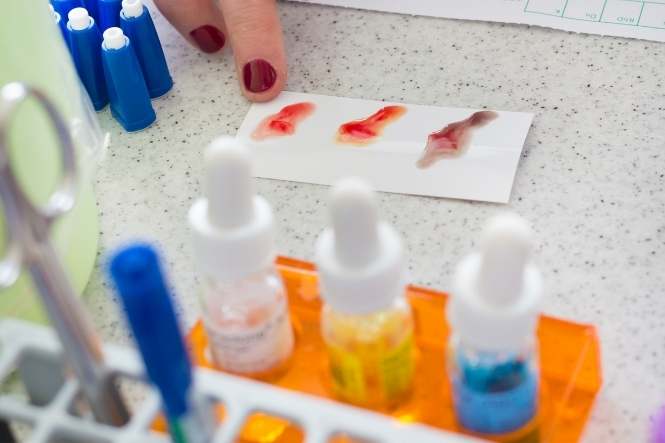The first question to ask and indeed to answer when looking into the area of blood types is: what is blood?
What is Blood?
Blood is – for the most part – the liquid part of the human body, which is called Plasma; and this Plasma contains proteins, clotting factors, electrolytes (which carry small electrical stimuli) and a varying number of cells.
These cells when broken down are:
- Platelets: Small cells involved in the clotting process which enable the flow of blood to be kerbed if a small cut or wound is inflicted
- Leucocytes: The blood’s white cells.
- Erythrocytes: The blood’s red cells.
After a wound has been inflicted and clotting has taken place the remaining fluid – known as serum – is a discoloured yellow and is still full of proteins and enzymes – this serum as we shall discuss is useful in the forensic process.
Blood Groups and Crime
Now that we have established in a little more detail what blood actually is; it is important to look at how the different blood groups are made up and also how these blood types are used in the categorisation of suspects in crimes where blood and other bodily fluids are secreted.
Forensics use a system called the ‘ABO System’, which is a system that measures antigens; antigens within the body determine blood type and are normally categorised as either A or B. Antigens categorised as being Type A are found in an individual’s red blood cells whilst the same equation can be applied to someone of Type B blood grouping.
Also within the blood typing system there are Rhesus antigens, which can be categorised as Type D; should an individual’s red blood cells have these Rhesus antigens they are classed as RH Positive and likewise if they do not appear they are classified as RH negative (or Rhesus Negative).
At a crime scene where there has been blood spilled – either that of the victim or that of the assailant – and indeed in some instances that of both parties; a serologist will take blood samples in order to identify who’s blood belongs to whom.
Taking the aforementioned factors into consideration makes this process somewhat less complex than it perhaps sounds and this blood grouping system is also used to determine from which blood group the individual’s parents were categorised.
Parents may have different blood from their children and indeed siblings may also have different blood groups but through the use of DNA fingerprinting it is possible to draw up certain characteristics that are shared between the father and mother and their offspring; this is called Mitochondrial DNA and can be found all the way through a family’s bloodline over many generations.
These blood types although used as a means of collating DNA evidence can be used more as a means of identification that an admission of guilt. As the discovery of a blood type through the use of a sample is useful it is not an exact enough science to prove that an individual has been the perpetrator of a crime on its own.
Other such evidence – as we have already mentioned – DNA evidence, trace evidence and eye witness accounts must all be used to compile a picture that can be used in any prosecution case.

